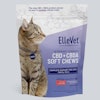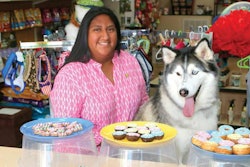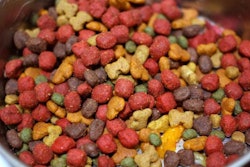
Pet owners with household incomes exceeding US$70,000 accounted for 51% of all pet food spending in the US as of June 2015, despite representing just under 35% of all households. While this may not seem surprising, it’s worth noting that those owners’ share of pet food spending was only 48.6% in June 2014. That’s according to data from the US Bureau of Labor Statistics (USBLS), compiled and analyzed by John Gibbons, aka the Pet Business Professor.
Before doing a deeper dive into the data, I want to give a shout-out to Gibbons. While USBLS collects and makes available large volumes of data related to just about any type of product or service purchased in the US (including pet food), that doesn’t mean the data is readily useful. It takes someone spending a fairly significant amount of time and brainpower to sort, compile and analyze the data to come up with meaningful information. That’s what Gibbons does with pet product/service related data—on his own time and mainly as just a service to the US pet industry.
So what did he find in USBLS’s “Mid-Year Update of the Consumer Expenditure Survey,” covering the period July 1, 2014, to June 30, 2015? First, that annual pet food spending in the US has reached US$26.8 billion, a very healthy 4.8% increase over the June 2014 total of US$22.9 billion.
As a point of comparison, the US$26.8 total is nearly smack-dab between other figures we’ve seen for 2015 US pet food sales, such as US$23.05 billion from the American Pet Products Association or about US$24 billion from GfK and, on the high side, US$30.27 billion from Packaged Facts. That tells me the USBLS number is probably the one to trust the most.
Based on other data provided by Packaged Facts and GfK, we also know the rise in pet food sales from 2014 to 2015 was driven mainly by continuing growth in the US pet specialty retail channel, which saw the same exact level of increase recorded overall by USBLS—4.8%, according to GfK. On the other hand, in other channels—especially mass market, which is still the largest for pet food sales at 23%—sales remained relatively flat. (Packaged Facts reported only 1.2% growth for mass market in 2015, based on IRI data.)
Gibbons also provided a detailed breakdown of pet food spending by age group, comparing 2015 to 2014 and finding that sales growth was driven by the “old and the young.” Specifically, the 55-64 and 25-34 age groups spent more, with Millennials (under 35) and older Boomers (65-74) showing significant increases in spending, too. So, perhaps these consumers are doing most of their pet food shopping in pet stores?
The real good news lies in the spending analysis by household income that Gibbons compiled. Not only are higher-income households now spending more, but all income groups over US$30,000 annually showed increased pet food spending, ranging from 19% to 25% growth. The only income group exhibiting a decrease in spending was the under US$30,000 cohort, and that decline was only about US$60 million, or 1.2%.
This data gibes with some from Simmons (reported by Packaged Facts), which found that as of summer 2015, 28.4% of US pet-owning households considered themselves better off financially than a year before, compared to 22.4% who considered themselves worse off. Packaged Facts did dampen the good news slightly with other data from its own February/March 2016 National Pet Owner Survey, showing that only a smaller percentage of US pet owners, 31%, said they are spending less on pet products because of the economy as they did in 2011, at 35%.
Packaged Facts contends that this may be the “new normal” of pet product spending in the US; and 61% of pet owners in their survey reported spending, on average, less than US$50 monthly on pet products. “Still, a slightly higher percentage of dog and cat owners said they were spending more than average in 2016 compared to the last two years,” Packaged Facts’ report said. Perhaps it was those owners in the higher income groups, as USBLS shows.


















